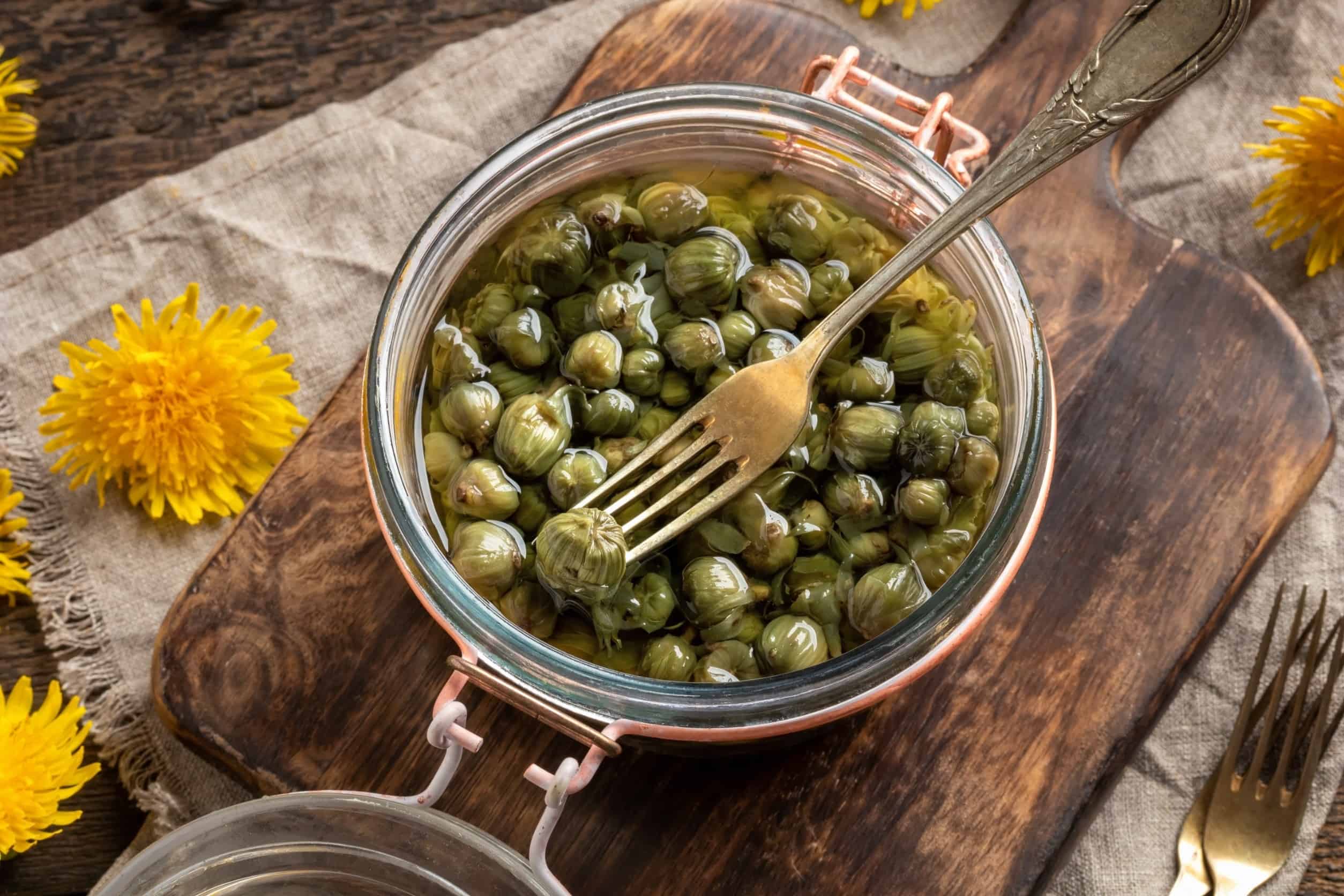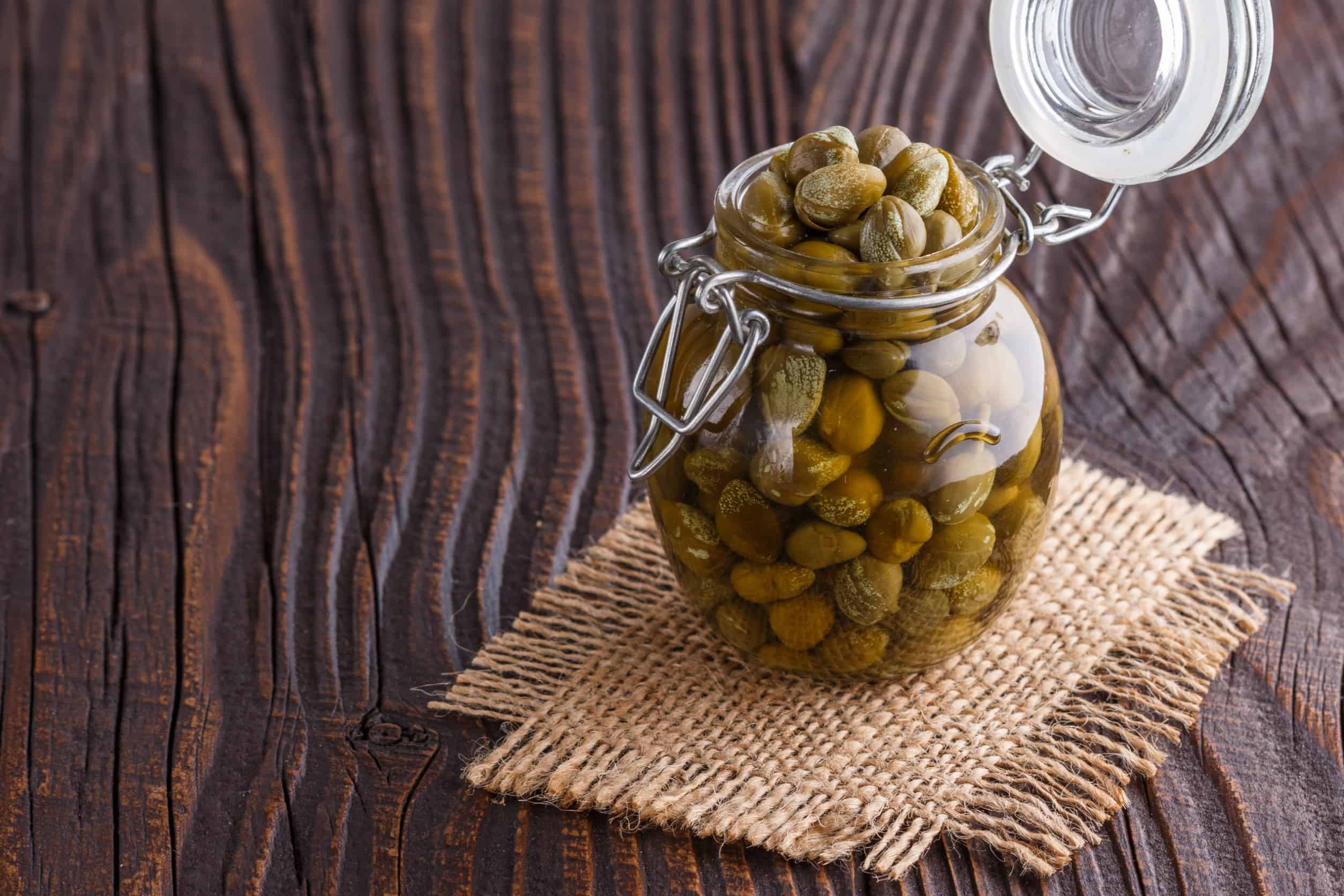Capers are a staple ingredient in many Greek and Italian dishes, known for their tangy and salty flavor that is perfect for stews, salads, pasta dishes, seafood, and many more types of cuisine.
But if you want to fully utilize their capabilities in the kitchen, then you should be aware of the caper varieties that you can choose from the market, with nonpareil and capote being the most popular.
It is easy to confuse those two with each other because they resemble each other visually and taste quite similar. But as a home cook, you should always keep in mind that they are entirely different ingredients and are not interchangeable in recipes.
Nonpareil capers tend to be smaller, but they have a more intense briny flavor that goes well with red meat. While capote offers a milder, slightly sweeter taste that is delicious when paired with fish or poultry.
In this guide, we will go through the seven main differences between nonpareil and capote, including their size, taste, and uses. By the end of this article, you will have a better understanding of those two most sought-after caper types, so you can choose the right type of ingredient for your next culinary adventure.
7 Main Differences Between Nonpareil and Capote Capers

If you’re a fan of Greek and Italian cuisine, you’ve most likely come across nonpareil and capote capers in various dishes. Despite their similar appearances, these two caper varieties have unique characteristics that set them apart from one another.
Listed below are the seven main differences between nonpareil and capote capers that you should be aware of.
1. Size
One of the most noticeable differences between nonpareil and capote capers is their size, with the former being about half the size of the latter.
Most nonpareil capers typically only range from 3 to 7 millimeters in diameter, while capote can measure up to 14 millimeters depending on the brand.
The obvious size difference is due to the fact that nonpareil capers are harvested when they aren’t fully grown yet to preserve their flavor and texture. Matured nonpareil capers tend to be tougher and less savory, so farmers usually pick them young for better quality produce.
On the other hand, capote capers are allowed to grow until they reach their maximum size.
2. Flavor and Aroma
In general, nonpareil capers have a more potent and briny taste than capote due to their small size and early harvest, which concentrates the flavor compounds.
They also have a distinct pungent aroma that makes them perfect for many sauces and dressings.
In contrast, capote capers have a milder taste and a slightly sweet undertone. It is more delicate and less overpowering, so it is usually used as a garnish for salads, seafood, and light dishes where the strong flavor of nonpareil capers is not ideal.
3. Texture
Another aspect that sets nonpareil and capote capers apart is their texture. The former tends to be firmer and crunchier due to its smaller size, while the latter has a softer texture.
When used in recipes, nonpareil capers will retain their shape and add a pleasant crunch to your dishes.
Capote capers, on the other hand, will usually dissolve and blend with the other ingredients, creating a smoother and more velvety texture.
4. Salt Content
Since nonpareil capers are typically preserved in a heavy brine solution, they naturally contain a higher concentration of salt compared to capote capers.
The higher salt content helps preserve their flavor and extend their shelf life, but it also means that they can overpower other ingredients in your dish.
In comparison, capote capers are packed in a bottle with a lower salt concentration. So they are a great option for people who are trying to limit their sodium intake.
Most importantly, having less salt means that the natural flavor of the capers will be more pronounced in your dishes. It will make it easier to balance the flavors of all the ingredients in your dish as well.
However, it is important to note that the specific salt concentration may vary depending on the brand of capers you purchased on the market. As such, it’s always a great idea for you to check the label or taste a small amount before you add them to your dish.
5. Availability
Nonpareil capers are the most popular and widely produced variety of capers in the world. So it is only natural that they are more readily available in supermarkets and grocery stores than capote capers.
Capote capers, on the other hand, are not as well known and are rarely used in the food industry, so they may not be easy to come by in your local stores.
Luckily, they should still be available in specialty stores, and you can always order them online.
6. Price
The price of nonpareil capers varies depending on the quality and where they were sourced, but they tend to be more expensive than capote capers.
As a reference, nonpareil capers can cost as much as $5 to $10 for a 2- to 4-ounce jar, while capote capers can cost around $3 to $7 for the same size jar.
7. Culinary uses
Nonpareil capers and capote capers have different flavor profiles, so naturally, they are used for different cooking applications.
Nonpareil capers are commonly used in sauces and dressings for red meat. They can also be used for spaghetti, as their saltiness balances the sweetness of the tomato sauce.
In contrast, capote capers are more fitting for seafood dishes like grilled fish and fish stews. Their mild flavor also works well as a garnish for appetizers and salads.
Storing and Preserving Capers

It is important to store your capers properly after they have been opened to ensure that they will stay fresh and flavorful. One of the most crucial steps in storing them is to keep them refrigerated after every use.
An opened jar of capers can typically last up to 6 months when stored properly in the fridge. However, their flavor and texture may begin to deteriorate after a few months, so it’s best to use them within that time frame for optimal taste.
In case the original container breaks, you can transfer the capers to a different container and make your own solution using water, vinegar, and salt.
Just make sure to use airtight containers when storing capers in a brine solution to prevent them from absorbing any unpleasant odors or flavors from other ingredients in the refrigerator.
Final Thoughts
Capers are versatile ingredients that can add a tangy and salty flavor to a wide range of dishes. But to use them properly, you need to know the differences between their most popular varieties: nonpareil and capote.
These two types of capers may look similar, but they have distinct differences in size, flavor, texture, salt content, and culinary uses.
Whether you’re a professional chef or a home cook, adding capers to your culinary repertoire can elevate the flavor of your dishes and impress your guests.
